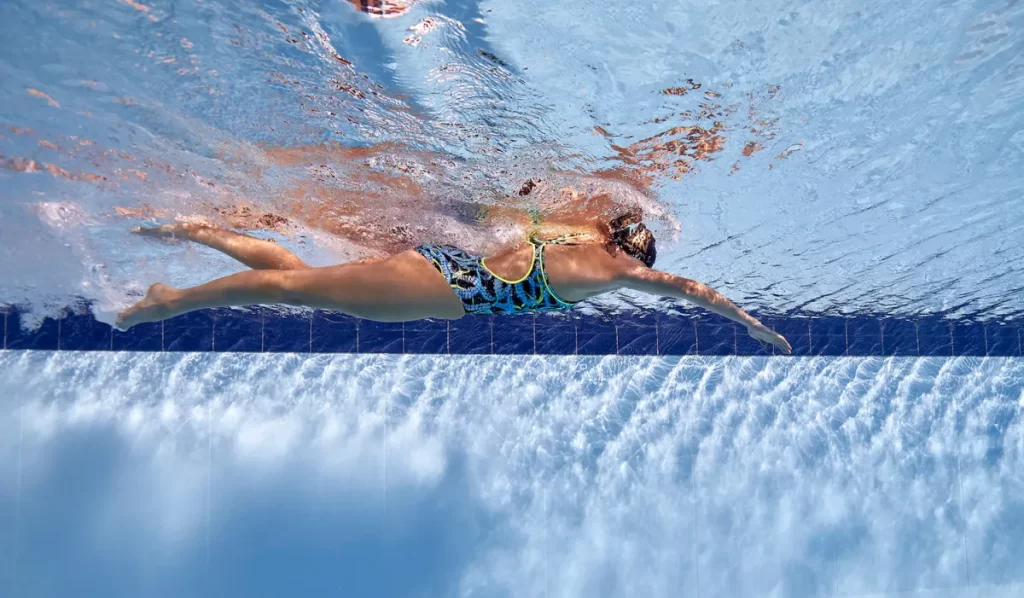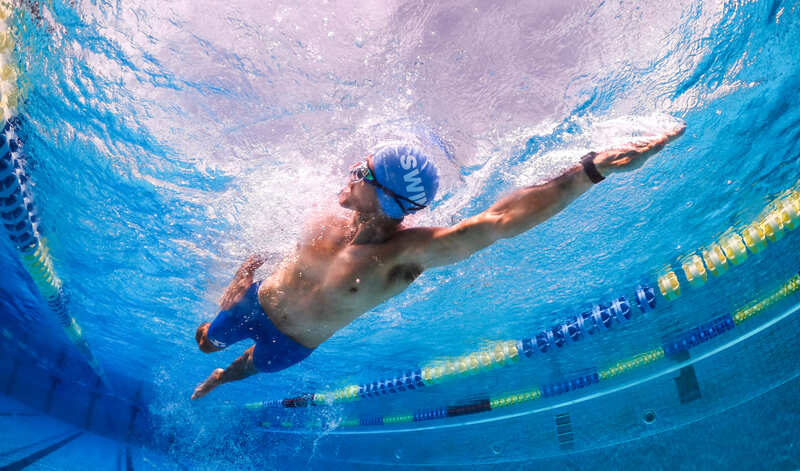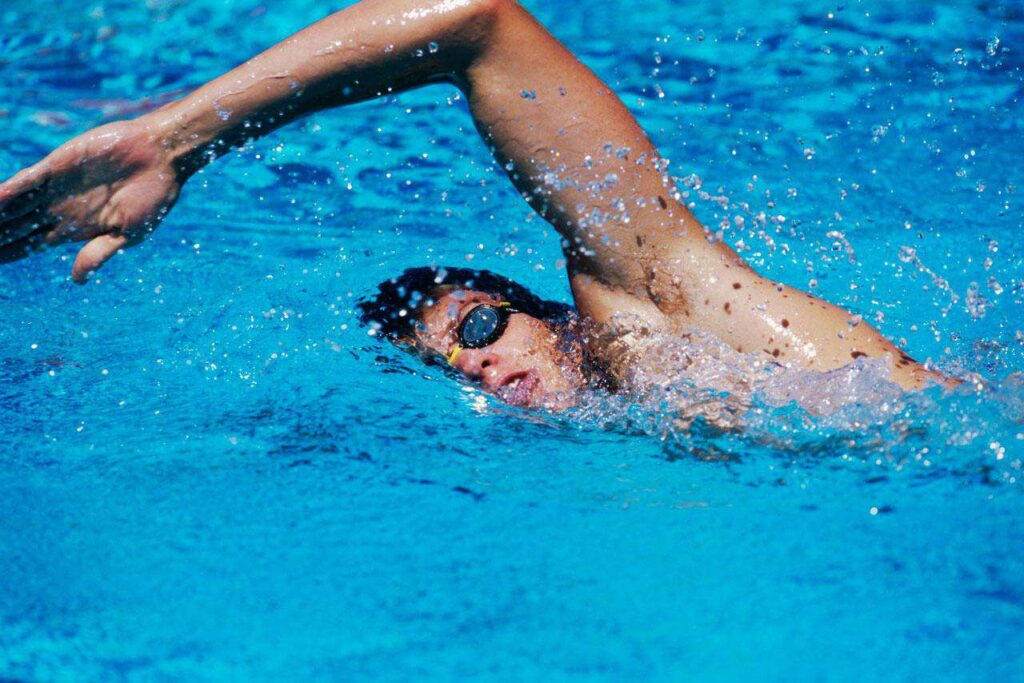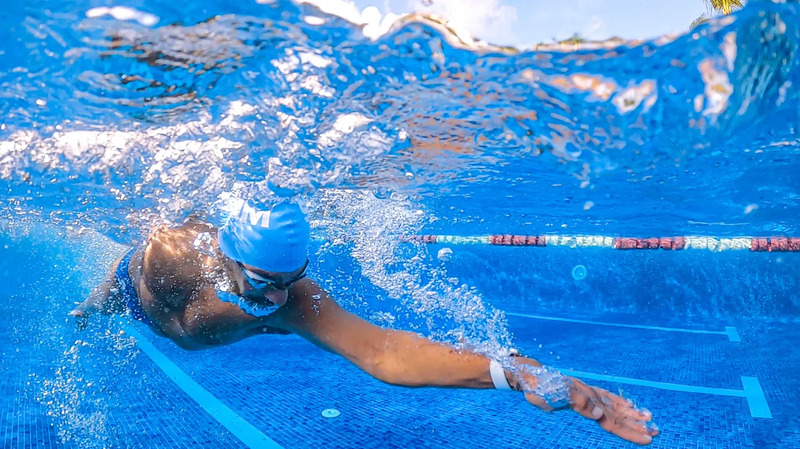Revolutionize Your Swim: Freestyle Drills for All Skill Levels’ is an essential guide for swimmers of all ages and abilities looking to improve their freestyle technique. From beginners just getting their feet wet to advanced swimmers aiming to enhance their speed and efficiency, this article provides a comprehensive range of drills tailored to each skill level. Incorporating these drills into your routine can help you achieve better body positioning, improve your breathing, and build up your endurance in the water. Whether you’re a young swimmer starting out or an adult refining your strokes, these freestyle drills are designed to make a splash in your swimming regimen.
Key Takeaways
- Freestyle swimming requires acclimation to water, mastery of breathing techniques, and the development of a strong flutter kick for beginners.
- Intermediate swimmers can benefit from drills that focus on body positioning, swim-roll-swim sequences, and building distance incrementally.
- Advanced freestyle drills emphasize arm strength, efficient flip turns, and endurance to prepare swimmers for competitive swimming.
- Children’s freestyle drills should be fun, promote safety and confidence in the water, and encourage learning through group dynamics.
- Setting specific goals, such as those outlined in the ‘5 Goals’ for various skill levels, can provide structure and motivation for swimmers to progress and master freestyle swimming.
Dive into Freestyle: Drills for Beginners
Getting Comfortable: Water Acclimation Techniques
Taking the first plunge into the world of swimming can be as exciting as it is daunting. The key to a smooth start is water acclimation, a process that helps new swimmers become comfortable and confident in the water. It’s all about baby steps, from getting your toes wet to full submersion.

- Goal 1: Acclimate to the water environment
- Goal 2: Overcome any initial fear
- Goal 3: Learn the back float
- Goal 4: Achieve full, gentle submersion
- Goal 5: Work towards swimming independence
For the little ones, classes like ‘Starfish’ and ‘Tadpole’ offer a nurturing space to meet these goals, with a focus on making the experience tear-free and fun. The journey begins with assisted back floats and progresses to independent jumps from the wall into the water.
Remember, every swimmer’s journey is unique, and patience is key. Celebrate each small victory, whether it’s mastering the back float or the thrill of that first independent submersion. As you grow more comfortable, you’ll find yourself eager to dive deeper into the world of swimming. For additional resources, the Swim Time Log website is a treasure trove of information on swimming techniques and health tips.
The Basics of Breathing: Side Breathing Drills
Mastering how to breathe in freestyle swim is a game-changer for any swimmer. It’s not just about gulping air; it’s about integrating breathing into your stroke rhythm seamlessly. Start with drills for breathing in freestyle that focus on timing and relaxation. Here’s a simple drill to get you started:
- Begin by floating on your side with one arm extended forward and your face in the water.
- Take a stroke and turn your head to the side as your arm recovers over the water.
- Inhale quickly and turn your face back down before the next stroke.
Consistency is key. Practice this drill until side breathing feels as natural as the strokes themselves.
Remember, the goal is to maintain a steady kick and keep your body aligned while you breathe. Don’t rush the process; with patience and practice, you’ll find your freestyle breathing rhythm.
Kick It Up a Notch: Flutter Kick Fundamentals
Mastering the flutter kick is essential for a strong freestyle foundation. Proper technique is key, and freestyle kick drills are designed to hone your skills. Start with a kickboard to focus solely on your legs, ensuring your kicks are small and consistent.

- Begin with short distances, like one pool length, and gradually increase as you gain confidence.
- Keep your legs straight but relaxed, and kick from the hips, not the knees.
- Practice both slow, controlled kicks and faster, sprint-like kicks to build endurance and speed.
Consistency is crucial. Regular practice of these drills will significantly improve your freestyle kick.
Remember, the goal is to create a balanced and efficient kick that propels you forward with minimal drag. By avoiding common mistakes, such as bending the knees too much or making large splashes, you’ll be well on your way to a more powerful and effective freestyle stroke.
Read more: Essential Freestyle Drill Techniques for Swimmers
Intermediate Techniques: Elevate Your Freestyle
Streamline Your Stroke: Body Positioning Tips
Getting your body position right is a game-changer in freestyle swimming. Holding your body position so that your head, hips, and heels are in line on the surface of the water is crucial. This alignment reduces drag and allows you to glide through the water more efficiently.
To maintain this position, imagine a string pulling you from the top of your head, keeping your body straight and level.
Here’s a quick checklist to ensure you’re on the right track:
- Keep your head down and look straight at the bottom of the pool
- Press your chest slightly down to elevate your hips
- Point your toes and engage your core
- Use a steady flutter kick from your hips, not your knees
Remember, practice makes perfect. Incorporate these tips into your routine and watch your freestyle transform!
Roll with It: Swim-Roll-Swim Sequences
Mastering the swim-roll-swim sequence is a game-changer for those looking to improve their freestyle swimming steps. This technique not only enhances your ability to swim longer distances but also ensures you’re swimming smarter, not harder. Start with a strong kick in freestyle swimming, which is the foundation of a good swim-roll-swim sequence. Remember how Michael Phelps freestyle looked effortless? That’s because he had this down to a science.
Here’s a simple breakdown to get you rolling:
- Begin with a streamlined push off the wall.
- Engage in a few strokes of freestyle.
- Roll onto your back without losing momentum.
- Take a few recovery breaths.
- Roll back into freestyle and continue swimming.
Consistency is key. Practice this sequence until it feels as natural as walking. The fluidity of the roll will conserve energy and can significantly improve your overall freestyle technique.
By incorporating this drill into your routine, you’ll notice a smoother transition in your strokes and better breath control. It’s all about finding that rhythm in the water, just like the pros.
From Drills to Distance: Building Up to 25 Yards
Transitioning from drills to swimming longer distances is a thrilling milestone. Start with shorter distances and gradually increase your yardage. This approach helps you focus on maintaining good form over longer stretches of water. Here’s a simple progression to build up to 25 yards:
- Swim 4 x 5 yards with 15 seconds rest
- Next, try 2 x 10 yards with 20 seconds rest
- Finally, swim 1 x 20 yards, and then a 5-yard victory lap!
Consistency is key. Regular practice will not only build your stamina but also reinforce the muscle memory for each stroke.
Once you’re comfortable with 25 yards, challenge yourself to increase the distance. Remember, the goal is to swim efficiently, not just far. Keep an eye on your technique, and don’t hesitate to return to drills if you find your form slipping. The journey from drills to distance is not just about building endurance, but also about becoming a more proficient swimmer.
Advanced Freestyle: Fine-Tuning for Speed and Efficiency
The Power of the Pull: Enhancing Arm Strength
To truly master the freestyle stroke, focusing on arm strength is a game-changer. The key is to pull after pausing for a short while, allowing the water to encircle your hand and forearm. This brief stop is crucial for optimizing front crawl arm movements, creating a pocket of water to ‘grab’ onto for a more powerful pull.

By incorporating specific drills that target your arm muscles, you’ll notice a significant improvement not only in strength but also in the fluidity of your stroke.
Here’s a simple drill to get started:
- Begin with your arms extended in front of you, fingertips pointing down.
- Pause briefly to let the water flow around your hand.
- Pull down through the water, imagining you’re pushing against a solid surface.
- Focus on engaging your lats and biceps as you pull.
- Finish the pull with a swift flick of your wrist to propel yourself forward.
Repeat this drill, concentrating on the sensation of the water and the muscles you’re engaging. With consistent practice, you’ll build the strength and technique needed to slice through the water with ease.
Flip Turn Fundamentals: Mastering the Turn
Nailing the flip turn is like adding a turbo boost to your laps. It’s all about timing, technique, and practice. Here’s a quick breakdown to get you flipping like a pro:
- Approach the wall with enough speed, but not too fast—you need control.
- As you reach the wall, tuck your chin and pull your knees to your chest for the somersault.
- Push off the wall in a streamlined position, on your back, then twist onto your stomach as you glide.
Remember, the flip turn is a continuous motion. Smoothness is key, so don’t rush it. Let your momentum carry you through the turn.
Practice makes perfect, and with these steps, you’ll be shaving seconds off your swim time before you know it. Just keep at it, and soon, the flip turn will be a seamless part of your freestyle routine.
Endurance Drills: Prepping for the Pre-Team
As young swimmers approach the pre-team level, endurance becomes a key focus. Building stamina in the water is crucial for those looking to join a swim team. A mix of dryland training and in-pool exercises can help achieve this goal. Dryland training, as highlighted by Sports Generation, emphasizes coordination, core stability, flexibility, and body strength, which are essential for endurance.
In the pool, swimmers should aim to gradually increase their distance, starting with shorter swims and building up to longer stretches. Here’s a simple progression to follow:
- Swim 10 yards with proper freestyle form
- Increase to 20 yards, focusing on consistent breathing
- Aim for 25 yards, integrating flip turns
Consistency is key. Regular practice of these drills will not only boost endurance but also improve overall technique.
Remember, the journey to becoming a pre-team swimmer is not just about the distance covered, but also about mastering the skills that make efficient swimming possible.
Freestyle for the Little Fins: Kid-Friendly Drills
Splashy Starters: Fun Introduction to Freestyle
Introducing kids to the world of swimming can be a splashy affair, especially with freestyle drills for beginners. These activities are designed to make the first strokes as fun as possible while instilling a love for the water.
- Start with the basics: water acclimation and ensuring comfort in the pool.
- Move on to games that incorporate gentle freestyle movements.
- Gradually introduce side breathing techniques through playful exercises.
- Celebrate each milestone, from the first full stroke to swimming a short distance.
Freestyle for beginners doesn’t have to be daunting. With the right approach, young swimmers will be eager to dive in and learn more. These initial drills set the foundation for a lifetime of swimming enjoyment and safety in the water.
Building Confidence: Safety Skills and Independent Swimming
Building confidence in the water is a cornerstone of learning to swim. For our little swimmers, achieving independence while ensuring safety is key. Here are some freestyle swimming tips for beginners that focus on safety skills and fostering independent swimming:
- Safe entry and exit from the pool are fundamental skills. It’s important for kids to learn how to get in and out of the water safely.
- Encouraging independent back floats and submerged rollovers can help children feel secure in the water, knowing they can keep themselves afloat.
- Practicing full submersion from the wall, whether sitting or standing, builds comfort with being underwater.
- Graduating from parental support to independence in the swim ring is a significant milestone for young swimmers.
By focusing on these goals, children can transition from reliance on parents to swimming freestyle technique for beginners with confidence.
Remember, the journey to becoming a proficient swimmer is built on a foundation of trust and comfort in the water. Start with these goals and watch your little ones turn into confident, independent swimmers.
Group Swim Dynamics: Learning with Peers
Swimming with peers isn’t just about fun and games; it’s a powerful way to enhance learning. Group settings encourage children to observe, imitate, and inspire each other, leading to a more engaging and effective swim education.

In group swim dynamics, children learn to take turns, share space, and support their friends, which are invaluable life skills. The structured environment of a swim class also provides a sense of routine and security, helping little ones to thrive.
The goals of group swim classes are clear: improve swimming skills, build confidence, and foster a sense of community among young swimmers.
Here’s a quick glance at some class goals for different levels:
- Tadpole: Focus on water acclimation and independence.
- Turtle 2: Enhance stroke skills and coordination.
- Shark 1: Aim for advanced stroke skills and endurance.
Choosing group learning over private lessons can be a pivotal decision in your child’s swim journey. Research shows group learning is best for children’s swimming lessons. If you are considering private lessons, it could be a mistake.
Dive into the world of swimming with our ‘Freestyle for the Little Fins: Kid-Friendly Drills’ article, perfect for parents looking to introduce their children to the joys of swimming. These drills are designed to be fun and engaging, ensuring your little ones learn the basics of freestyle swimming in a supportive and enjoyable environment. Don’t let your child miss out on the fun – visit our website now to read the full article and discover more about our swimming community!
Conclusion
And there you have it, folks! Whether you’re just dipping your toes into the world of swimming or you’re ready to make a splash with more advanced techniques, these freestyle drills are designed to suit swimmers of all stripes. From the little minnows in the kiddie pool to the sharks dominating the lanes, there’s always room to grow and improve. Remember, practice makes perfect, so don’t be afraid to dive back into this article whenever you need a refresher. Keep kicking, stay buoyant, and most importantly, have fun making waves in your swim journey!
Read more: 5 Freestyle Drills to Upgrade Your Swim Technique
AUTHOR
Sang Nguyen
Sang Nguyen is a former national swimmer for Vietnam who has transitioned into coaching. With a passion for fostering a healthy swimming community and connecting like-minded individuals,......Read More
BLOG
Maybe You Are Interested
Good Swim Meet Snacks: What to Eat for Optimal Performance
Good nutrition is crucial for swimmers to maintain energy, recover quickly, and perform at their...
Read More...Optimizing Your Performance: The Best Diet for Swimming Training
Optimizing your performance in swimming is not just about rigorous training; it’s equally crucial to...
Read More...Achieve Peak Performance with This Diet Chart for Swimmers
Whether you’re a novice or an expert swimmer, understanding the right diet is crucial for...
Read More...Eating Like a Champion: Exploring the Diet of Michael Phelps
Michael Phelps, renowned for his Olympic triumphs, has a diet as extraordinary as his swimming...
Read More...Muscle Gain for Swimmers: Tailoring Your Diet for Strength
Swimming is a demanding sport that requires a tailored approach to nutrition to support muscle...
Read More...A Comprehensive Diet Plan To Gain Weight For Swimmers
Swimming is a demanding sport that requires meticulous attention to nutritional needs to optimize performance,...
Read More...